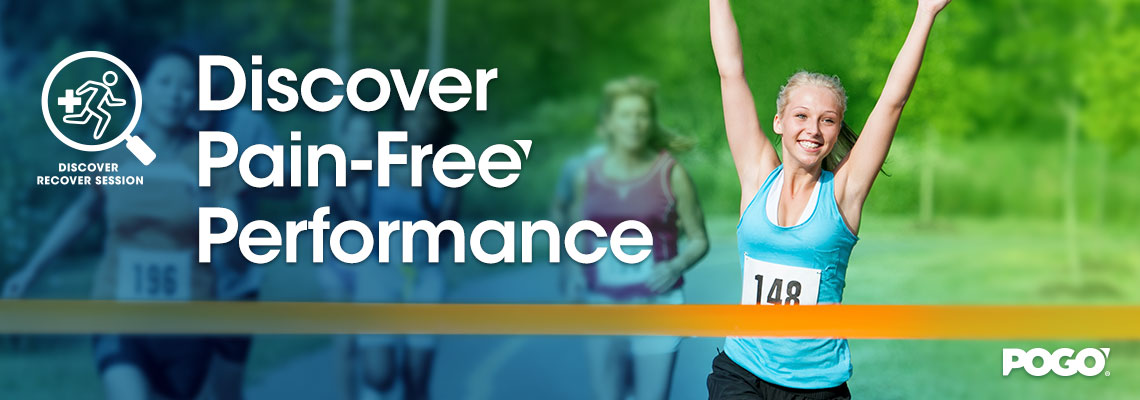Running Hip Stability and Strength Exercises
Transcript
One of the top 4 hip stability exercises I routinely give out for runners both injured and uninjured alike to optimize their hip stability is what I call the active hip external rotations. So Peter is going to demonstrate here. Now you don’t need a treatment table at home but you do need a bed so do this off the edge of your bed. The setup is critical. Peter’s thigh needs to be at 90 degrees and his knees at 90 degrees as well. So that is 90 and 90. The hips are square over so not leaning back and not leaning too far forwards and then Peter is simply going to lift his foot up and down just letting the inner leg or foot drop back down towards the ground and that’s the movement. Now its Peters hip external rotators that are performing this movement so they’re the muscles that are being strengthened. This one requires a hundred repetitions continuously and I often get rolling of the eyes from runners when I advise they need to do a hundred reps however if you think about it in context of running for an hour and utilizing these hip muscles 5400 times a hundred reps isn’t a lot in comparison however it is sufficient. So the aim is to get to those hundred reps continuous making the movement as smooth as possible with a natural tempo like Peters demonstrating here.
Now when you can do that continuously, it may take you several weeks to build up to that, the next step is to place a resistance band around the foot. Bands come in different colours and I like to put blue band or at the very maximum black bands around the runners that I see in the practice. Now this other end here will simply tie off to the leg of a bit of furniture or even the leg of the bed and Peter is now going to resume his count aiming to build up to a hundred repetitions continuously. Very fatiguing but it’s one of the sure four ways to promote hip stability and enjoy pain and injury free running.
One of my top 4 hip stability exercises I like to give out to runners is called the single-leg bridge now there is a predecessor to the single-leg bridges, the double-leg bridges, but I tend to skip that in most cases and get the runners straight onto the single-leg version of this exercise. So I’m going to have Peter demonstrate here, Peter is going to extend this leg and keep it parallel to the other thigh Peter is then going to lift up from the hips up to the sky and back down with the hips up and down there Peter will go. The aim is to get full extension between the shoulder, the hip and the ankle pushing maximally up as far as you can driving through the buttock. This exercise targets the gluteus maximus or the glute max as it’s known. Now to start with you can begin with three lots of 12 reps on each side but as you become competent with that you want to progress to being able to do 36 repetitions continuously on each side. One of the top four and most commonly prescribed hip stability exercises I give out for runners that are injured and uninjured alike is an exercise i call the fire hydrants.
Peter is going to demonstrate a fire hydrant. The key is to get the starting position right. So we need the hands directly under the shoulders and we need the knee directly underneath the hip. Now from here Peter is going to bring the leg around trying to get the foot in line with the hip as far as you can and then from there up and down with that foot without hitting the ground or the floor. The repetitions we’re needing are three lots of 12 on each side. As Peters strength and endurance, and yours does as well, improve you’ll be able to aim towards completing 36 repetitions continuously on each side. Peter will feel it working the glutes on both sides. It’s combining the glute max, glute medius and a little bit of the hip external rotators. Enjoy the fire hydrants!
One of the other top four hip stability exercises I like to give runners such as Peter is the single leg sit to stands. It’s arguably my favourite exercise for injured runners and uninjured runners and Peter is going to demonstrate. So there’s two levels of the single-leg sit-to-stand, the first is with the hands and arms out. So Peter is going to demonstrate on his right leg going from sitting to standing with nice control holding at the top and coming back down. Now the aim here is to lean forward with the trunk like you’re falling out of a chair and come up as quickly as you can. Once at the top you want to stabilise, hold and sit back down. Now the next level is with Peter taking his hands up and overhead. This is the more advanced version and if Peter can pop the hands together there we’re going to demonstrate on the right leg again and come up nice and quick, balance at the top, and then sitting back down. So leaning forwards holding it at the top and sitting back down. This exercise is very taxing, very demanding and it’s predominantly working the gluteus maximus the glute max. Repetition wise I will start runners with three lots of six repetitions on each side and as they develop strength and endurance they can progress up to three lots of 12 reps. I have had some marathoners aiming for 36 reps continuous but depending on the distance that you’re running you can pick your level but I would suggest starting at three lots of six reps for the single leg sit-to-stand exercise.
Yours in Running,
#runpainfree

Brad Beer (APAM)
Physiotherapist (APAM)
Author ‘You CAN Run Pain Free!’
Founder POGO Physio








